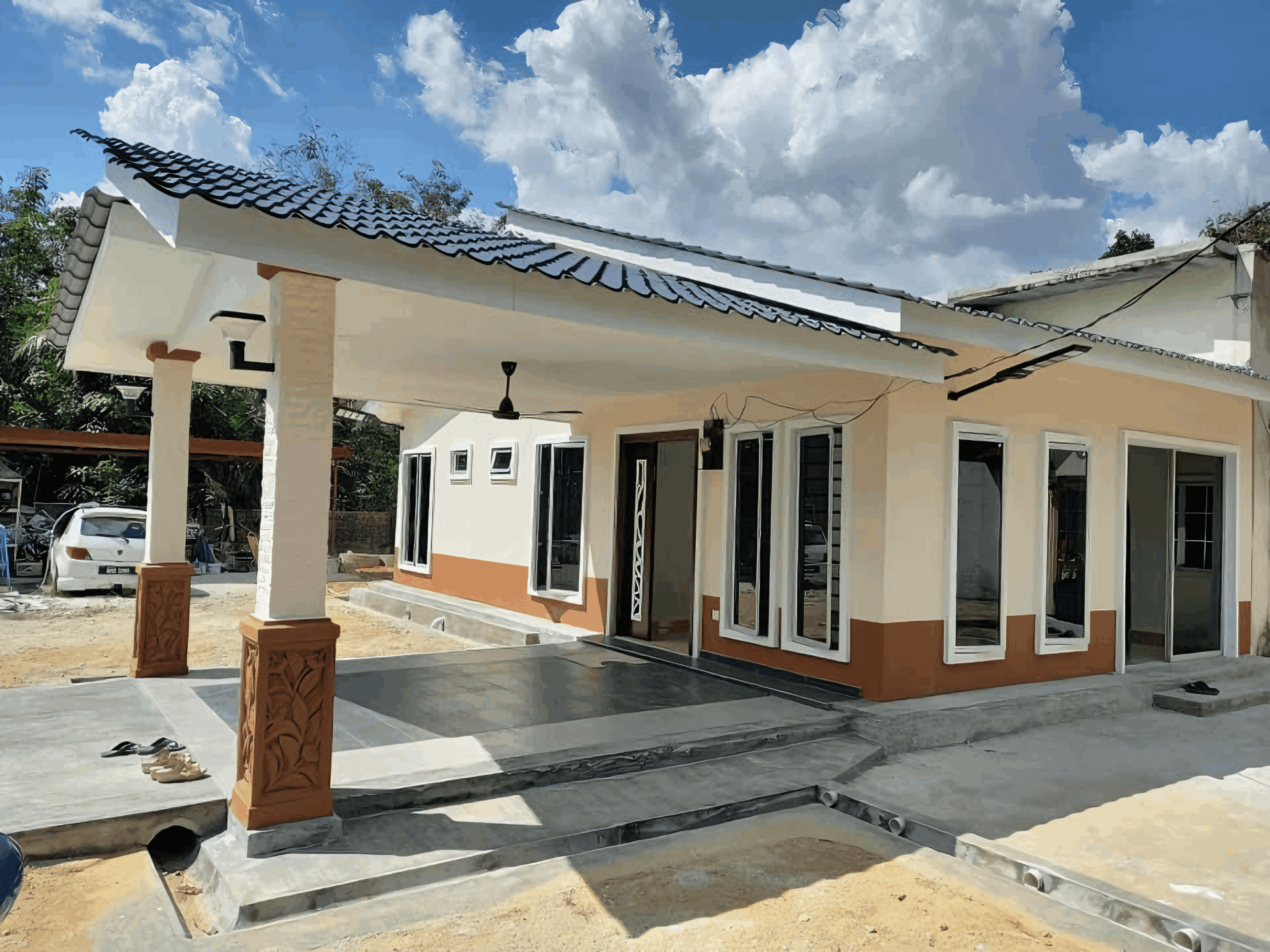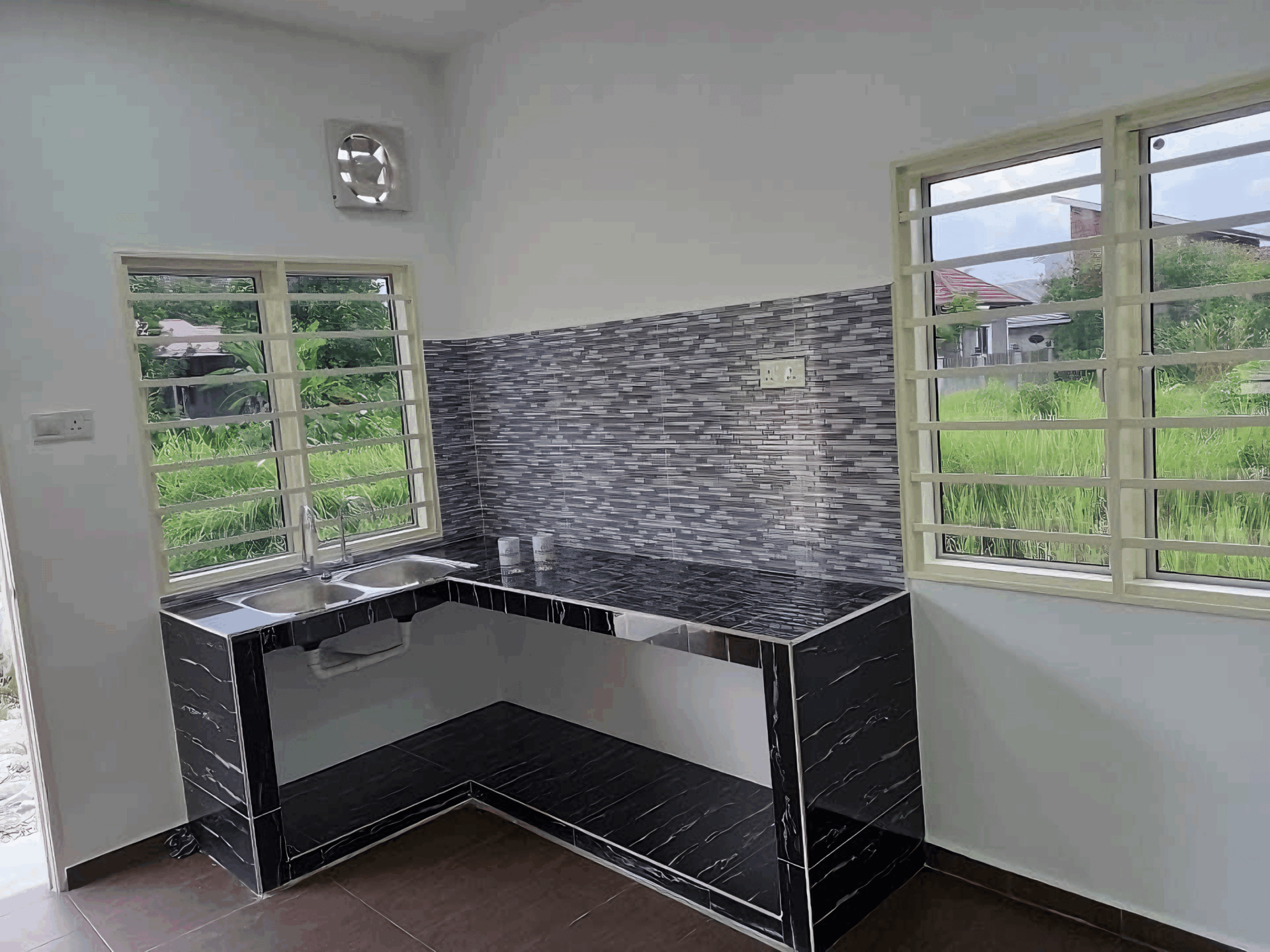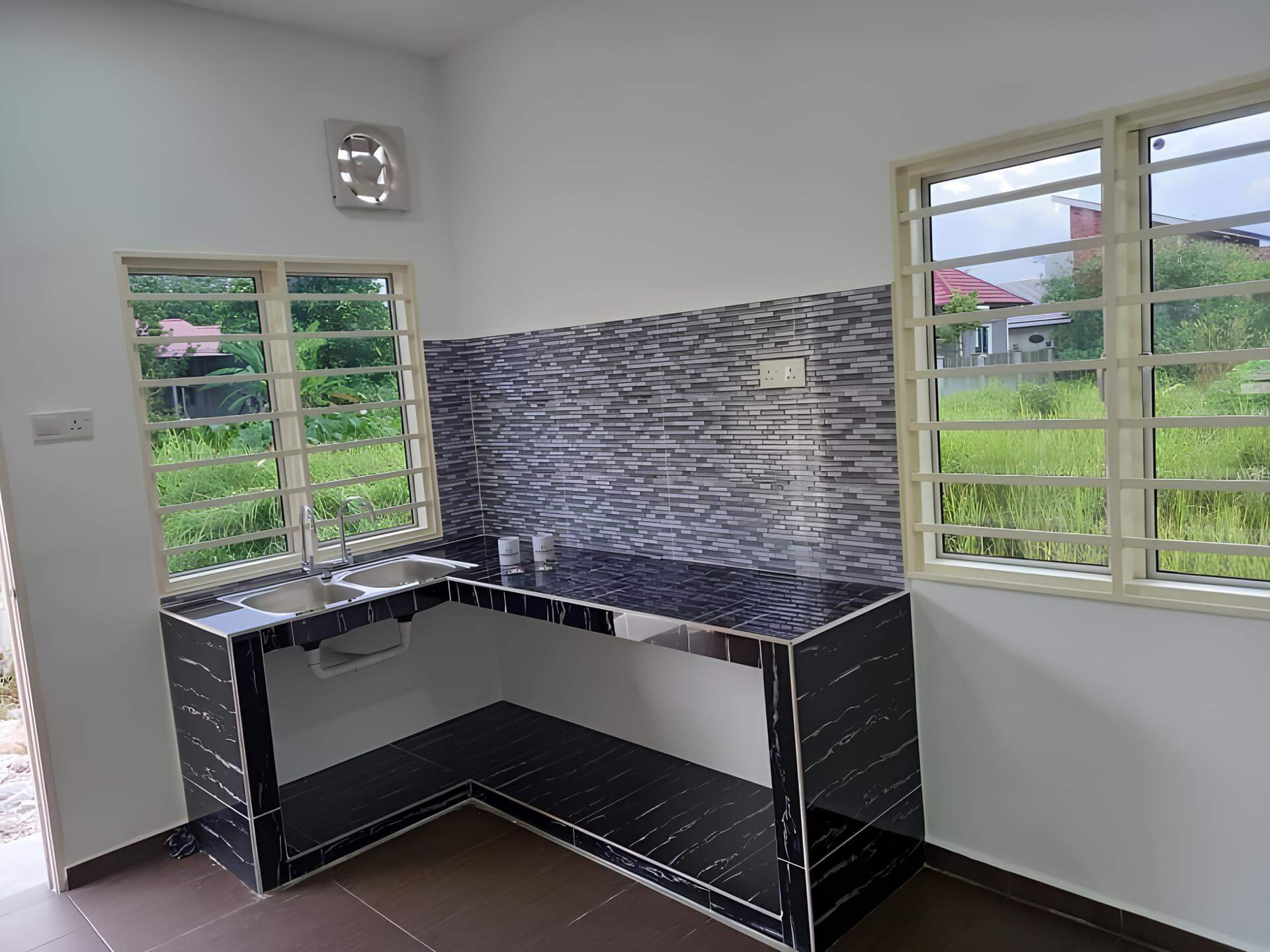Why Industrial Construction is the Backbone of Malaysia’s Economy | RumahHQ

Introduction:
Hey there, fellow Malaysians! When you think about what drives our country’s economy, industries like tech, agriculture, or tourism might pop into your mind. But let’s take a moment to shine the spotlight on a powerhouse that often works behind the scenes—industrial construction. You see, industrial construction is like the sturdy backbone of our economy, quietly supporting and connecting various sectors in a way that you might not even realize. From bustling factories to sprawling warehouses and cutting-edge research facilities, this sector isn’t just about building structures; it’s about laying the foundation for growth, innovation, and job creation. So, let’s dive into why industrial construction is such a crucial player in Malaysia’s economic landscape and how it influences our daily lives, often in ways we take for granted. Buckle up—there’s plenty to explore!
The Role of Industrial Construction in Economic Stability
Industrial construction is a key driver for Malaysia’s economic health, acting as a catalyst for growth and development across various sectors. When massive structures like manufacturing plants, warehouses, and distribution centers are built, they not only enhance the country’s infrastructure but also create a ripple effect. Each of these projects generates direct and indirect jobs, infusing cash into local economies and boosting spending in surrounding areas. This symbiotic relationship between construction and the economy ensures that when one sector thrives, it uplifts many others alongside it.
Moreover, industrial construction promotes innovation and efficiency. With advancements in construction technologies and sustainable practices, Malaysia’s industrial sector is adapting to global standards. This evolution means that not only do we get state-of-the-art facilities, but we also increase productivity. Businesses that invest in modern industrial spaces can scale operations, reduce costs, and minimize environmental impact, aligning with Malaysia’s long-term goals for sustainability and competitiveness on the world stage. The move towards green construction practices further solidifies this sector’s importance as it brings along *numerous benefits*, such as:
- Job Creation: Engaging a diverse workforce from various skill levels.
- Technology Integration: Facilitating greater collaboration and innovation.
- Environmental Impact: Prioritizing eco-friendly materials and methods.
Furthermore, the impact of industrial construction on Malaysia’s GDP should not be underestimated. A dedicated focus on large-scale projects can directly influence economic output, driving investments and attracting foreign partnerships. To better illustrate this, take a look at the following table showing the estimated contributions of industrial construction to various sectors in the economy:
| Sector | Estimated Contribution (in RM Billion) |
|---|---|
| Manufacturing | 150 |
| Logistics | 100 |
| Retail | 75 |
As industries continue to thrive with robust construction initiatives, Malaysia stands to gain not just in terms of immediate economic boost, but also through long-lasting stability and growth. By investing in infrastructure today, we are laying the groundwork for a more prosperous tomorrow, ensuring that our economy remains agile and resilient in the face of global challenges.

Key Sectors Driving Growth in Malaysias Industrial Landscape
In Malaysia’s dynamic industrial landscape, several sectors are emerging as key drivers of economic growth. Manufacturing stands at the forefront, contributing significantly to the nation’s GDP. This sector not only produces a diverse range of products but also has a ripple effect on job creation and technological advancement. With robust export markets and increasing foreign direct investment (FDI), the manufacturing industry is set to expand further, leveraging Malaysia’s strategic location and skilled workforce.
Another crucial sector is construction, which plays a pivotal role in shaping the physical and economic infrastructure of the nation. Housing projects, commercial spaces, and industrial parks are rapidly being developed, thanks to government initiatives aimed at boosting urban development. This surge in construction activity is not just about erecting buildings; it encompasses a variety of related services and materials, indirectly supporting industries like logistics, real estate, and manufacturing. Let’s look at some statistics:
| Sector | Contribution to GDP (%) | Current Growth Rate (%) |
|---|---|---|
| Manufacturing | 22 | 5.4 |
| Construction | 4.2 | 6.2 |
| Agriculture | 8.7 | 3.5 |
| Services | 54 | 4.5 |
Lastly, the technology and digital services sector is swiftly gaining momentum, spurred by digital transformation and a growing appetite for innovation. Companies are increasingly investing in R&D and adopting industry 4.0 practices, which not only improves production efficiency but also creates high-skilled job opportunities. The emphasis on digital economy is helping Malaysia position itself as a hub for tech startups and advanced manufacturing, ensuring a sustainable and forward-looking industrial ecosystem.

Innovations in Industrial Construction Enhancing Efficiency
Recent advancements in technology are reshaping the landscape of industrial construction in Malaysia, bringing about efficiencies that were previously unimaginable. With the rise of Building Information Modeling (BIM), project planners can now visualize every phase before the first brick is laid. This predictive capability minimizes errors and reduces waste, saving both time and money in the long run. Imagine being able to foresee potential issues and resolve them long before they become costly problems — that’s the power of innovation at work!
Moreover, the integration of automated machinery has revolutionized traditional construction methods. Drones, for instance, are being deployed for site surveys, providing real-time data that enhances decision-making. Not only do they speed up the initial stages of a project, but they also ensure safety by limiting the need for personnel in potentially hazardous environments. The construction sites are transforming into high-tech environments where every tool and machine works in unison to maximize productivity.
Lastly, let’s not overlook the role of sustainable practices in industrial construction, which not only improve the bottom line but also contribute to environmental preservation. The shift towards eco-friendly materials and energy-efficient designs is becoming the norm. Here are a few examples of how sustainability is being embraced:
- Recycled materials – Reducing waste and cutting costs.
- Green roofs – Enhancing insulation and managing rainwater.
- Solar panels – Providing renewable energy sources on-site.

Workforce Development: Skills for a Growing Industry
As Malaysia’s industrial construction sector expands, the need for a highly skilled workforce has never been more crucial. Workers today must possess a diverse array of technical skills, along with the ability to adapt to rapidly evolving technologies. Some of the essential skills include:
- Project Management: Understanding how to oversee construction projects from conception to completion.
- Engineering Fundamentals: Familiarity with civil, mechanical, and electrical engineering principles.
- Safety Protocols: Knowledge of safety regulations to ensure a secure working environment.
- Digital Proficiency: Ability to use software tools for design and planning.
- Communication Skills: Effective collaboration with teams and clients is key.
Moreover, in this dynamic environment, soft skills are just as important. Employers are on the lookout for workers who can bring more than technical expertise to the table. Enhanced problem-solving skills, strong teamwork abilities, and adaptability to tackle unforeseen challenges can set candidates apart. The construction landscape demands individuals who can thrive under pressure and contribute positively to a diverse team atmosphere.
The government and private sector play pivotal roles in addressing these skills gaps. Through various training programs, partnerships with educational institutions, and skill certification initiatives, the industry can cultivate a robust pipeline of talent. Here’s a snapshot of some key initiatives aimed at fostering workforce development:
| Initiative | Description |
|---|---|
| Technical Training Programs | Hands-on training for various construction roles to equip workers with industry-relevant skills. |
| Scholarships and Grants | Financial support for students pursuing careers in engineering and construction fields. |
| Industry Partnerships | Collaborations between companies and educational institutions to tailor curricula to market needs. |

Sustainable Practices Shaping the Future of Construction
In the realm of construction, a shift towards sustainable practices is not merely a trend; it’s a necessity that echoes through the bustling streets of Malaysia. The industry is increasingly leaning on methods that conserve natural resources and minimize waste. Key strategies include the use of recyclable materials, optimizing energy efficiency, and adopting innovative construction techniques that reduce the carbon footprint. Such practices not only promote a healthier environment but also enhance the durability and resilience of structures, making them more cost-effective in the long run.
As Malaysia embraces its rapid urbanization and industrialization, technologies like Building Information Modeling (BIM) have become instrumental in promoting sustainable practices. BIM streamlines the construction process, allowing for better planning, resource management, and collaboration among stakeholders. This not only shortens project timelines but also reduces material waste, ensuring that every resource is used efficiently. Additionally, the integration of green building certifications encourages developers to adhere to sustainable guidelines, fostering a culture of accountability and environmental stewardship within the industry.
The future is bright for sustainable construction in Malaysia, driven by both governmental policies and community awareness. With incentives for developers to adopt energy-efficient designs and renewable energy sources, the construction landscape is transforming. Local initiatives promoting sustainable urban development, such as eco-cities and green parks, are sprouting up, showcasing a commitment to a greener future. As we look ahead, the blend of innovation and sustainability will undoubtedly solidify the construction sector’s role as a cornerstone of economic growth while safeguarding our planet for generations to come.

Investment Opportunities in Malaysias Industrial Sector
Malaysia’s industrial sector is ripe for investment, offering a multitude of avenues that are both promising and strategically positioned for growth. The government has been proactive in creating a conducive environment for foreign and domestic investments, providing incentives that attract businesses to explore opportunities in manufacturing, logistics, and the high-tech industries. With continuous improvements in infrastructure and a steady influx of talent, investing in this sector can yield substantial returns.
One key area of interest is the manufacturing sector, particularly in electronics, automotive, and pharmaceuticals. Emerging technologies, including automation and artificial intelligence, are reshaping the landscape, inviting investors to dive into cutting-edge projects. By embracing Green Manufacturing Practices, businesses not only commit to sustainability but also tap into a growing market of eco-conscious consumers. Below are some attractive industries to consider:
- Electronics Manufacturing: Major growth driven by global demand.
- Aerospace Components: Expanding with Malaysia’s strategic location.
- Logistics and Supply Chain: Leveraging Malaysia’s regional connectivity.
- Food Processing: Increasing local and global demand for halal products.
Furthermore, the government’s initiative towards smart manufacturing and Industry 4.0 is creating an ecosystem where innovation flourishes. Investments in technology-driven projects such as IoT and robotics can offer a competitive edge. Below is a brief overview of the supporting government initiatives:
| Initiative | Description | Benefits |
|---|---|---|
| Industry 4.0 Policy | Encourages automation and data exchange | Increased efficiency and productivity |
| Investment Tax Allowance | Incentives for qualifying projects | Reduced tax burden for investors |
| Digital Malaysia | Initiative to boost digital economy | Access to digital tools and platforms |

Challenges Faced by the Industry and Strategies for Overcoming Them
The industrial construction sector in Malaysia is grappling with a variety of challenges that can hinder progress and efficiency. Among these, labor shortages pose a significant hurdle, largely driven by an aging workforce and limited interest among younger generations. Furthermore, rising material costs continue to squeeze budgets, making it crucial for firms to adopt smarter procurement strategies to mitigate impacts. Lastly, adapting to regulatory changes and keeping pace with environmental standards can often feel like navigating a labyrinth, slowing projects down.
To tackle these issues head-on, industry leaders are embracing innovative strategies. For instance, investing in skilled labor development through training programs not only attracts new entrants but also upskills existing workers, creating a more adaptable workforce. Firms are also exploring supply chain diversifications to ensure access to materials at competitive prices without compromising quality. Additionally, the integration of technology, such as Building Information Modeling (BIM) and project management software, enhances operational visibility and compliance with regulatory changes, thereby streamlining processes.
| Challenge | Strategy |
|---|---|
| Labor Shortages | Implement training programs to upskill the workforce |
| Rising Material Costs | Diversify supply chains for better pricing |
| Regulatory Changes | Adopt technology for improved compliance |
Ultimately, the resilience of Malaysia’s industrial construction sector depends on its ability to navigate these challenges with agility and foresight. By enhancing workforce capabilities, leveraging technology, and optimizing supply chains, the industry can not only survive but thrive, solidifying its role as the backbone of the nation’s economy.
The Path Forward: Ensuring Resilience and Growth in Industrial Construction
To secure the future of industrial construction in Malaysia, a multi-faceted approach is vital. Emphasizing innovation and technology will not only enhance operational efficiency but also reduce environmental impact. By integrating advanced construction techniques and smart technologies, we can pave the way for projects that meet the challenges of our ever-evolving landscape. Key areas to focus on include:
- Adopting building information modeling (BIM) for better project visualization and management.
- Incorporating sustainable practices in material selection and waste management.
- Utilizing automation and robotics to boost productivity on-site.
Moreover, collaboration among stakeholders is essential to foster resilience in the sector. Engaging with government bodies, private sectors, and local communities will create a supportive ecosystem that encourages investment and knowledge sharing. A proposed framework for collaboration can include:
| Stakeholder | Role | Contribution |
|---|---|---|
| Government | Policy Maker | Regulatory support, incentives |
| Private Sector | Investor | Funds, expertise |
| Communities | Local Advocate | Feedback, workforce |
Lastly, continuous education and workforce development will ensure that we have a skilled labor pool ready to meet the demands of the industry. Initiatives like training programs and apprenticeships can equip workers with the latest skills. Organizations should look to partner with educational institutions to develop tailored curriculums that focus on emerging trends in industrial construction. By committing to these strategies, we can not only strengthen the backbone of Malaysia’s economy but also contribute to a vibrant and sustainable future for the construction industry.
Concluding Remarks
So there you have it! Industrial construction isn’t just about building big warehouses and factories; it’s the sturdy backbone that supports and drives Malaysia’s economy forward. From creating jobs and boosting local businesses to attracting investments and paving the way for innovation, this sector plays a crucial role in shaping our nation’s future. As we continue to evolve and embrace new technologies, there’s no doubt that industrial construction will remain at the heart of our economic growth. So, the next time you pass by a construction site, remember: it’s not just bricks and mortar; it’s a vital part of Malaysia’s journey towards progress. Let’s keep building our future together!











